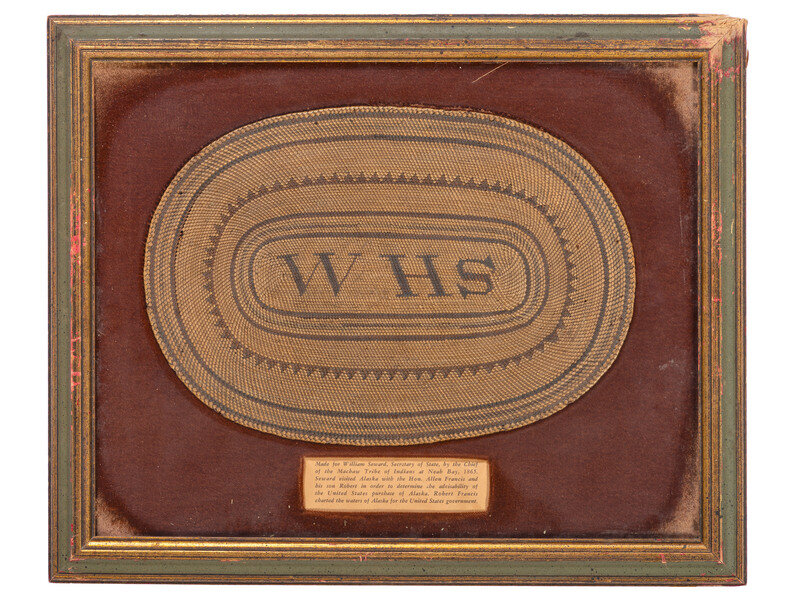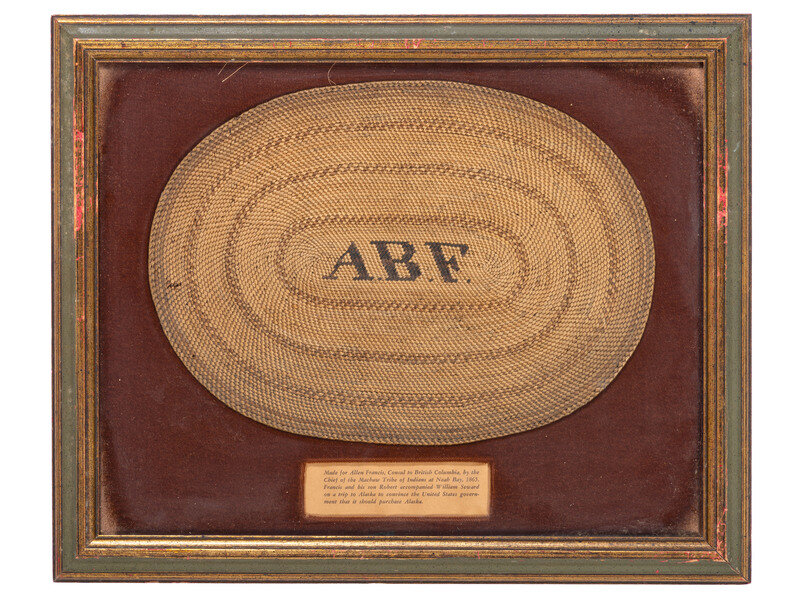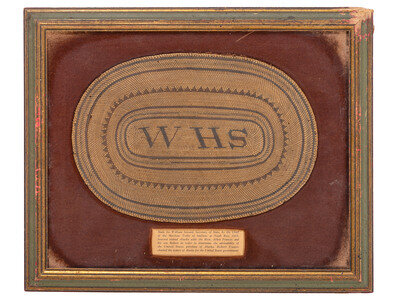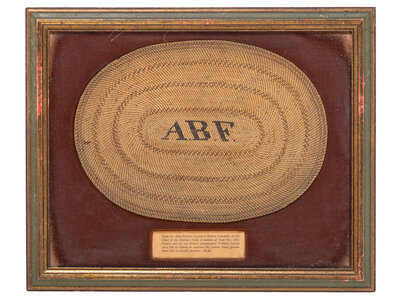Condition Report
Contact Information
Auction Specialist
Lot 186
Sale 6425 - American Historical Ephemera and Early Photography, including The Larry Ness Collection of Native American Photography
Part I - Lots 1-222
Oct 23, 2025
10:00AM ET
Part II - Lots 223-376
Oct 24, 2025
10:00AM ET
Live / Cincinnati
Own a similar item?
Estimate
$1,500 -
2,500
Price Realized
$3,600
Sold prices are inclusive of Buyer’s Premium
Lot Description
[ALASKA PURCHASE]. Two woven mats presented to Wm. Henry Seward and Allen B. Francis, US Consul to British Columbia by the Chief of the Makah tribe at Neah Bay in 1865.
2 woven mats, one measuring 11 1/2 x 8 in., with initials "WHS" at center for William H. Seward; the other measuring 11 3/4 x 8 1/2 in., with initials "ABF" at center for Allen B. Francis. Both mounted on velvet displays and framed to approx. 16 1/2 x 13 1/4 in.
Printed paper labels beneath each mat describe the artifacts as being made specially for the recipient, "by the Chief of the Machaw Tribe of Indians at Neah Bay, 1865." Text further explains that Hon. Allen B. Francis and his son, Robert, accompanied William H. Seward on a trip to Alaska to determine the advisability of the United States purchase of Alaska. Robert Francis charted the waters of Alaska for the United States Government.
Seward was lambasted by critics after the purchase of Alaska from the Russian Empire, which he brokered. The acquisition became known by detractors as "Seward's Folly," or even "Seward's Icebox." Seward was tasked with meeting the Russian minister to the United States, Eduard de Stoeckl, to negotiate a treaty allowing the United States to purchase the Alaskan Territory, which then included parts of northern California and even ports in Hawaii. The two men agreed upon a purchase price of 7.2 million dollars, and signed the treaty, which was approved by the US Senate on 9 April and ratified by President Andrew Johnson on 28 May 1867. History soon proved the deal to be a great bargain for the United States, and the acquisition of Alaska remains one of Seward's most enduring legacies. (Tokar, Sofia. "The myth—and memorabilia—of Seward's Folly." 2018).
The Makah people, who have long dwelt in the northwest tip of the Olympic Peninsula, are known for their rich tradition of basket weaving, using grasses, tree bark, and roots to create such tightly-woven containers and mats that they are considered to be watertight. The Makah signed the Treaty of Neah Bay in 1855, which ceded approximately 300,000 acres of land in what is now Washington to the United States, but secured their whaling rights in the territory. It is likely that Seward would have met with representatives of the Makah on his visit, given their proximity to the lands he intended to purchase and their previous cooperation with the US government.
Provenance: Acquired from a Maine Estate.



